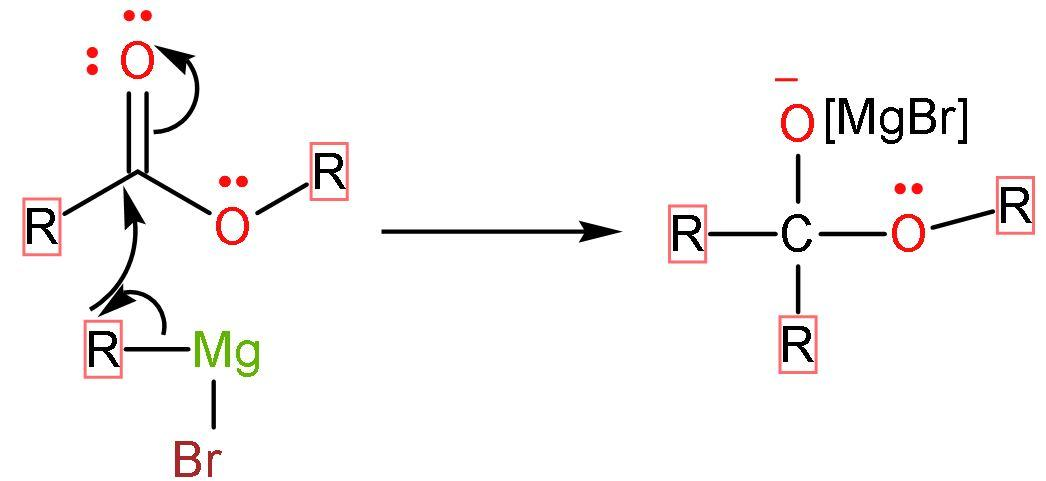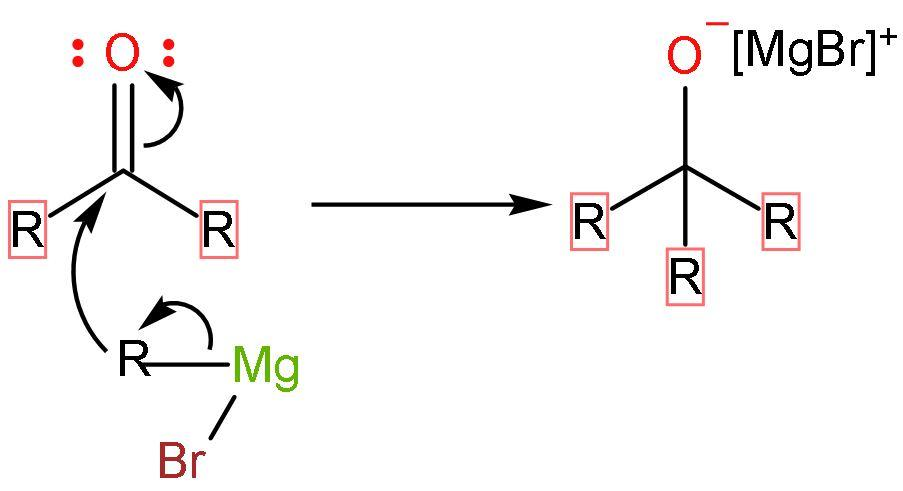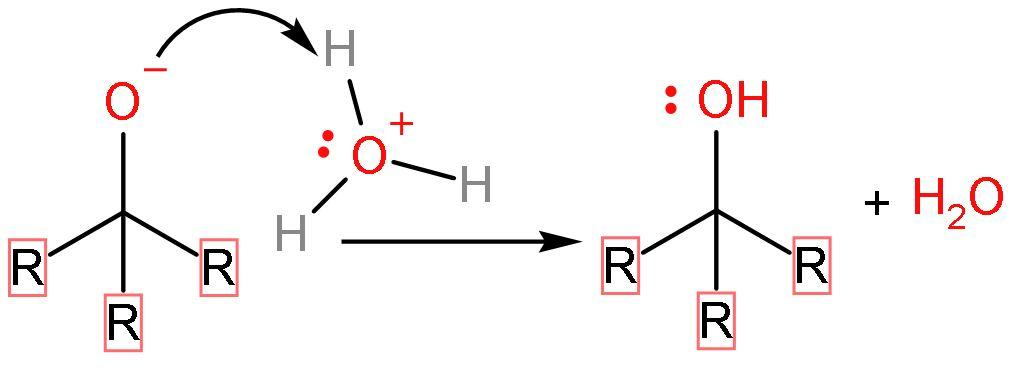Question
Question: Identify the intermediate formed in Grignard reagent reaction with ester? A. Aldehyde B. Ketone ...
Identify the intermediate formed in Grignard reagent reaction with ester?
A. Aldehyde
B. Ketone
C. Benzene
D. Propene
Solution
Grignard reagent is a chemical compound with general name as alkyl magnesium halide with alkyl chain possessing negative charge and magnesium due to electropositivity having +2 charge. Intermediate is a compound formed in-between the reaction. The intermediate of the reaction can be judged only by looking at its mechanism.
Complete answer:
Let us solve this question using the mechanism of ester with Grignard reagent:
Step (1)- The Grignard reagent acts as a nucleophile and attacks the carbonyl group present in esters. After, the attack oxygen atom present in the carbonyl group will have the negative charge and the alkyl group adds to the carbon atom of the carbonyl group.

Step (2)- The negative charge on the oxygen atom forms bond with carbon, leaving the RO− group to separate from the compound as RO−. Thus, forming a double bond with carbon atoms and obtaining ketone (a carbonyl group and other valencies satisfied by alkyl groups) as an intermediate.

Step (3)- The ketone formed further undergoes nucleophilic addition or reaction with Grignard reagent because it has a carbonyl group present in it. The process restarts with addition of Grignard reagent and forming negative charge on oxygen atom of carbonyl group.

Step (4)- The last step includes the protonation of water or hydrolysis of the compound to finally form alcohol as its product.

Ketone is the intermediate formed in Grignard reagent reaction with ester.
The correct option is option ‘b’.
Note:
Ester is less prone to Grignard reagent in comparison to aldehydes and ketones because the electrophilicity of carbon atoms of carbonyl group is decreased by the self-resonance or intramolecular resonance of esters. The lone pair of oxygen undergoes resonance with the double bond between carbon and oxygen atoms.

